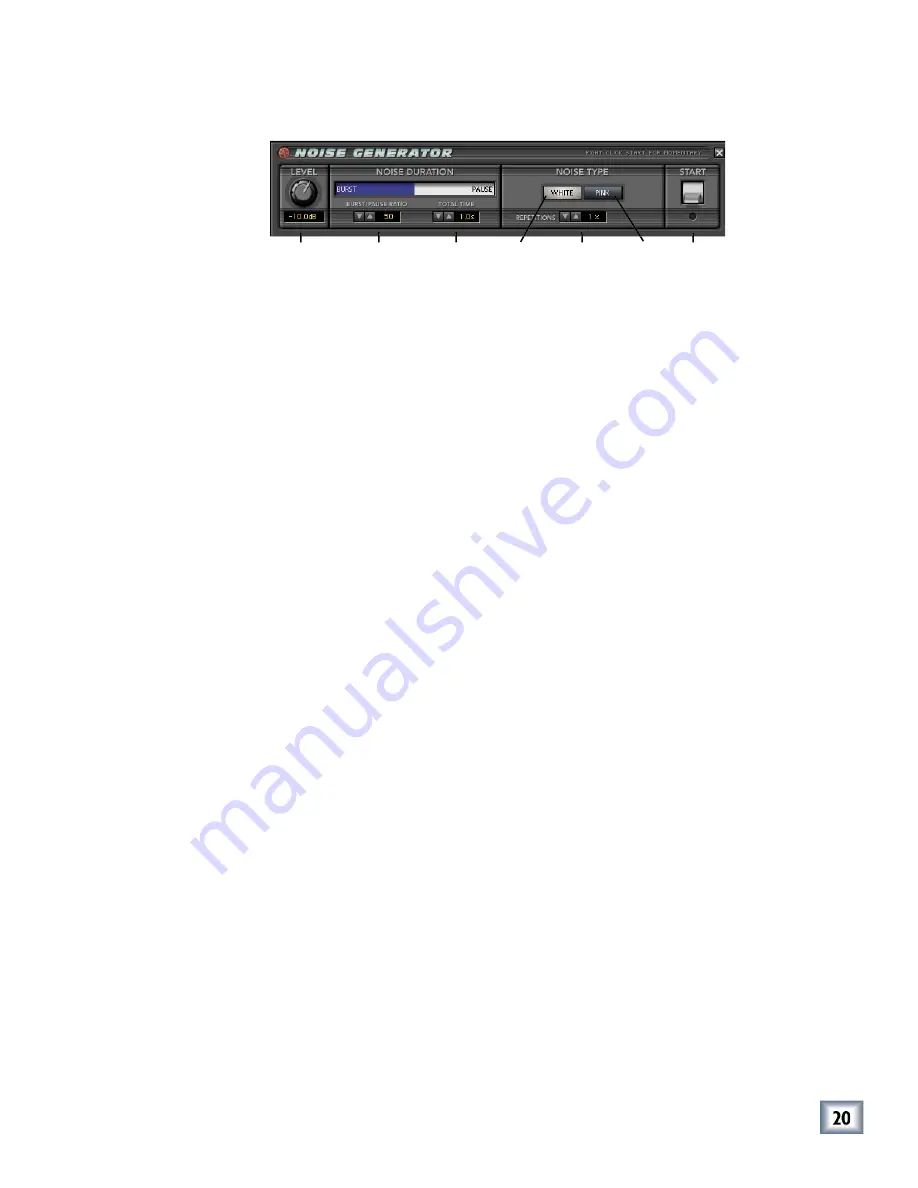
User’s Guide
Noise Generator
The Noise Generator
This noise generator produces white and pink noise, and has independent burst/
pause ratio, total time, and repetitions. White and pink noise are random signals that
include all of the audio frequencies. The noise simulates the random thermal motion
of electrons. When either white or pink noise is amplifi ed, we perceive the sound as
hiss. White noise has a fl at linear frequency response, while pink noise has a fl at
logarithmic frequency response (as shown by a logarithmic Spectrum Analyzer).
Level
Use your mouse to select an output level ranging from off to 0 dB RMS of a full-scale
sine wave. The reference level is based on 0 dB RMS output values generated by the
noise generator.
Noise Duration: Burst/Pause Ratio
This ratio refers to the percentage of burst vs. pause that is applied to the generated
noise. This pause interval can be assigned to any increment between 0 seconds (off)
and 100 seconds (full). To adjust the ratio, use your mouse to select the up/down
arrows, or scroll the numbers in the small window, or grab the blue bar graphic and
move it left or right.
Noise Duration: Total Time
This refers to the combined length of the burst and the pause. This increment can be
assigned to any interval between 0 seconds (off) and 60 seconds. Use the mouse to
select the up or down arrows or to scroll the digit.
Repetitions
Repetitions refer to the number of repetitions of the noise bursts. The number of
repetitions can be selected to repeat a sequence over any number of times between 1
and infi nity.
Noise Type: White
White noise is unfi ltered, unaltered thermal noise just like you hear when you turn
your amplifi er all the way up to listen to the noise fl oor.
Noise Type: Pink
Pink noise is white noise that has been fi ltered with a pinking fi lter. This is a 3 dB
per octave low-pass fi lter, starting at the lowest frequency band. It produces a ‘fl at’
spectrum when viewed with a logarithmic spectrum analyzer.
Start
Left-click to start the noise generator, click again to stop. Right-click to play a mo-
mentary noise burst for as long as you hold down the button.
Level
Repetitions
White
Pink Start
Total Time
Burst/Pause
Ratio






























